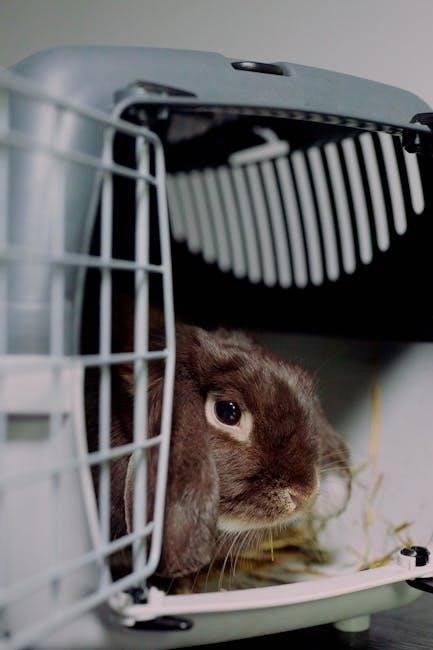Welcome to this comprehensive guide on refilling the Carrier Comfort Pro APU AC system. Proper refrigerant refill is essential for maintaining optimal cooling performance and extending the lifespan of your APU. This guide provides step-by-step instructions, safety tips, and troubleshooting advice to ensure a successful refill process.

Importance of Refrigerant in APU AC Systems
The refrigerant plays a critical role in the operation of the Carrier Comfort Pro APU AC system, enabling heat transfer and cooling. Proper refrigerant levels ensure efficient cooling, prevent overheating, and maintain system performance. Low refrigerant levels can lead to reduced cooling capacity, increased energy consumption, and potential system damage. Refrigerant also protects the system from corrosion and ensures lubrication of moving parts. Using the correct type of refrigerant, such as R-134A or R-410A, is essential for compatibility and safety. Improper refrigerant handling can cause environmental harm, as these substances contribute to ozone depletion and climate change. Always follow EPA guidelines and manufacturer recommendations when handling refrigerants. Regular maintenance and inspections are crucial to detect leaks or imbalances early, ensuring optimal performance and longevity of the APU AC system.
- Ensure proper cooling and system efficiency.
- Prevent overheating and potential damage.
- Maintain environmental compliance.
- Protect against corrosion and wear.
For detailed refill procedures, refer to the next section.

Tools and Equipment Needed for Refill
To successfully refill the refrigerant in your Carrier Comfort Pro APU AC system, you will need specific tools and equipment. These include a low-pressure service port for accessing the system, a quick-connect fitting to attach the refrigerant hose, and a refrigerant charging manifold to monitor pressure levels. Additionally, a refrigerant bottle with the correct type of refrigerant (e.g., R-134A) is essential. A vacuum pump is recommended to evacuate air and moisture from the system before refilling. Safety gear such as gloves and protective eyewear is crucial when handling refrigerants. Ensure all tools are compatible with the refrigerant type to avoid contamination or system damage. If you are unsure about any equipment, consult a certified technician or the Carrier Comfort Pro APU service manual for detailed specifications.
- Low-pressure service port
- Quick-connect fitting
- Refrigerant charging manifold
- Refrigerant bottle (R-134A or compatible)
- Vacuum pump
- Safety gloves and eyewear
- Service manual
Having the right tools ensures a safe and efficient refill process. Always follow manufacturer guidelines for equipment usage and compatibility.

Step-by-Step Refill Instructions
Refilling the refrigerant in your Carrier Comfort Pro APU AC system requires careful attention to detail to ensure proper functionality. Start by locating the low-pressure service port on the APU. Open the hood of your unit and identify the port, which is typically marked for refrigerant charging. Before proceeding, ensure the system is turned off and allowed to cool to avoid any pressure discrepancies.
- Attach the quick-connect fitting to the refrigerant hose and connect it to the low-pressure port. Ensure the fitting is securely tightened to prevent leaks.
- Turn on the APU and set the thermostat to the lowest setting to activate the cooling cycle. This allows the system to draw in the refrigerant evenly.
- Slowly open the refrigerant bottle valve and monitor the pressure gauge on the charging manifold. The recommended pressure level is typically between 60-80 PSI, depending on the ambient temperature.
- Add refrigerant gradually, checking the pressure frequently to avoid overcharging. Stop once the desired pressure is reached.
- After refilling, disconnect the hose and replace the protective cap on the service port.
- Turn off the APU and allow the system to rest for a few minutes before restarting to ensure proper refrigerant distribution.
Always refer to the Carrier Comfort Pro APU service manual for specific pressure guidelines and refrigerant type compatibility. If unsure, consult a certified technician to avoid system damage.
Safety Precautions During Refill
Ensuring safety is critical when refilling the refrigerant in your Carrier Comfort Pro APU AC system. Always wear protective gear, including gloves, safety goggles, and a face mask, to prevent exposure to refrigerant vapors. Work in a well-ventilated area to avoid inhaling harmful fumes.
- Ensure the APU is turned off and allowed to cool before starting the refill process to prevent pressure-related injuries.
- Never overcharge the system, as this can lead to system damage or refrigerant leaks. Monitor pressure levels closely using a charging manifold.
- Use only the recommended type and amount of refrigerant specified in the Carrier Comfort Pro manual to maintain compatibility and performance.
- Keep a fire extinguisher nearby, as refrigerants are flammable and can ignite if mishandled.
- Avoid breathing directly near the service ports, as refrigerant vapors can cause respiratory issues.
- If you experience dizziness or discomfort, immediately exit the area and seek fresh air.
Remember, improper handling of refrigerants can result in environmental harm and system damage. Always follow EPA guidelines and refer to the Carrier Comfort Pro APU service manual for specific safety recommendations. If unsure, consult a certified technician to ensure a safe and successful refill process.
Common Issues and Troubleshooting
When refilling the refrigerant in your Carrier Comfort Pro APU AC, several common issues may arise. One of the most frequent problems is a low refrigerant charge, which can cause the system to shut off due to low pressure. This often requires recharging the refrigerant to the recommended levels specified in the manual.
- Incorrect Service Port Identification: Locating the correct low-pressure service port can be challenging. Ensure you refer to the Carrier Comfort Pro manual or consult a professional if unsure.
- Refrigerant Leaks: Leaks in the system can prevent proper cooling. Inspect hoses and connections for damage or wear and repair them before refilling.
- Overcharging: Adding too much refrigerant can damage the compressor. Always use a charging manifold to monitor pressure levels accurately.
- Incompatible Refrigerant: Using the wrong type of refrigerant, such as R-134A in systems designed for R-410A, can cause operational issues. Verify compatibility before refilling.
If the system does not cool properly after refilling, check for blockages in the air filters or condenser coils. If issues persist, consult a certified HVAC technician to diagnose and resolve the problem effectively.

Maintenance Tips for Optimal Performance
Regular maintenance is crucial to ensure the Carrier Comfort Pro APU AC operates efficiently and effectively. Start by inspecting the refrigerant levels periodically to avoid low-charge issues, which can lead to system shutdowns or reduced cooling performance. Always check for leaks in hoses, connections, and seals before and after refilling to prevent refrigerant loss.
- Clean Condenser Coils: Dirt or debris on the condenser coils can reduce heat dissipation, lowering system efficiency. Use a soft brush or compressed air to clean them regularly.
- Inspect Air Filters: Clogged air filters restrict airflow, causing the system to work harder and consume more energy. Replace or clean filters as recommended by the manufacturer.
- Check Service Ports: Ensure service ports are tightly sealed after refilling to prevent refrigerant leaks. Use the correct gaskets and tighten fittings securely.
- Monitor System Pressure: Use a charging manifold to keep track of system pressure during and after refilling. This helps maintain optimal performance and prevents overcharging.
By following these maintenance tips, you can extend the lifespan of your Carrier Comfort Pro APU AC, reduce energy consumption, and ensure reliable cooling performance. Regular inspections and proactive care are key to avoiding costly repairs and downtime.
Understanding Refrigerant Types and Compatibility
Understanding the types of refrigerants and their compatibility is essential for properly refilling and maintaining the Carrier Comfort Pro APU AC system. The most commonly used refrigerant in these systems is R-134A, which is environmentally friendly and widely compatible with automotive air conditioning systems. However, it’s crucial to ensure that the refrigerant you use is specifically designed for your APU model and complies with manufacturer specifications.
- R-134A: This is the standard refrigerant for most Carrier Comfort Pro APU AC systems. It is non-toxic and non-flammable, making it safe for use in vehicles.
- R-410A: While primarily used in stationary air conditioning systems, some newer APU models may require R-410A. Ensure compatibility before use.
Using the wrong refrigerant type can lead to system incompatibility, reduced performance, or even damage to the AC components. Always consult the service manual or contact a certified technician to confirm the correct refrigerant for your specific APU model. Additionally, be aware of environmental regulations regarding refrigerant handling and disposal to ensure compliance and minimize ecological impact.
Professional Assistance and Certification Requirements
When dealing with the Carrier Comfort Pro APU AC system, professional assistance is often necessary to ensure compliance with safety standards, environmental regulations, and manufacturer guidelines. Refrigerant handling, in particular, requires specialized knowledge and tools, making it a task best left to certified technicians.
Certification is crucial for handling refrigerants like R-134A or R-410A, as improper handling can lead to environmental harm or system damage. Technicians must obtain certifications such as EPA Section 609 for automotive air conditioning systems to legally perform refrigerant services. These certifications ensure that professionals are trained to follow proper safety protocols and environmental procedures.
In addition to certification, working with a licensed HVAC technician ensures that the refill process is done correctly, avoiding common issues like overcharging or undercharging the system. Many manufacturers, including Carrier, recommend using authorized service providers to maintain warranty validity and system performance.
While DIY kits are available, they often lack the precision and safety measures of professional equipment, increasing the risk of system damage or refrigerant leaks. For optimal results and compliance, consulting a certified professional is highly recommended.
Environmental Considerations for Refrigerant Handling
Proper handling of refrigerants in the Carrier Comfort Pro APU AC system is critical to minimize environmental impact. Refrigerants like R-134A and R-410A are potent greenhouse gases, and their improper release can contribute to climate change. Always follow EPA guidelines and local regulations to ensure safe handling and disposal.
Refrigerant leaks must be repaired promptly, as they not only reduce system efficiency but also harm the environment. Use EPA-certified recovery machines to reclaim refrigerants during service or disposal. Never vent refrigerants into the atmosphere, as this violates environmental laws and exacerbates ozone depletion.
Disposal of refrigerants and related materials must adhere to hazardous waste regulations. Properly label and store refrigerant cylinders, and ensure they are recycled or disposed of through approved facilities. Choosing eco-friendly refrigerants and minimizing waste are key to sustainable practices.
By adhering to these environmental considerations, you can help reduce the ecological footprint of your Carrier Comfort Pro APU AC system while maintaining its performance and efficiency. Compliance with environmental standards is not only a legal requirement but also a responsible practice for future generations.

Post-Refill System Check
After refilling the refrigerant in your Carrier Comfort Pro APU AC system, it’s crucial to perform a thorough system check to ensure everything operates efficiently. Start by turning on the AC system and allowing it to run for a few minutes to circulate the refrigerant.
Check the low-pressure port and high-pressure port to ensure the pressure readings are within the manufacturer’s recommended range. Use a manifold gauge set to monitor these pressures accurately. If the readings are too high or too low, it may indicate an overcharge or undercharge situation.
Inspect the system for any leaks, especially around the service ports and connections. Use a leak detection kit or soapy water to identify any escaping refrigerant. Addressing leaks promptly prevents further refrigerant loss and maintains system performance.
Verify that the AC blows cold air consistently. If the airflow is weak or the air is not cooling properly, it could signal improper refrigerant levels or a blockage in the system. Finally, ensure all components, such as the compressor and condenser fan, are functioning correctly.
A proper post-refill check ensures your Carrier Comfort Pro APU AC system runs efficiently, providing reliable cooling and minimizing the risk of future issues.
Cost and Time Efficiency of Proper Refill
Properly refilling the refrigerant in your Carrier Comfort Pro APU AC system is not only essential for performance but also offers significant cost and time efficiencies. A well-executed refill ensures your system operates at peak efficiency, reducing energy consumption and extending the lifespan of your APU.
Incorrect or incomplete refills can lead to premature wear on components, costly repairs, and increased downtime. By following the recommended procedures, you minimize the risk of these issues, saving money in the long run. Additionally, a properly charged system reduces the need for frequent refills, lowering overall maintenance costs.
Time efficiency is another key benefit. A systematic approach to refilling ensures the process is completed quickly, allowing you to get back to your operations without delays. Proper techniques also reduce the likelihood of refrigerant waste, which saves time and resources associated with cleanup and disposal.
Properly refilling the refrigerant in your Carrier Comfort Pro APU AC system is a critical task that ensures optimal performance, energy efficiency, and longevity of your unit. By following the detailed steps and safety guidelines outlined in this guide, you can achieve a successful refill and avoid common pitfalls such as overcharging or refrigerant leaks.
Regular maintenance and timely refills are essential to prevent issues like reduced cooling performance or system shutdowns. Always prioritize safety by wearing protective gear and using the correct tools. If you’re unsure about any step, consult a certified technician to avoid potential hazards and ensure compliance with environmental regulations.
Final Recommendations:
- Always use compatible refrigerant types for your system.
- Keep a refrigerant recharge kit and manifold gauge set on hand.
- Schedule regular system checks to maintain efficiency.
By adhering to these guidelines, you’ll ensure your Carrier Comfort Pro APU AC operates reliably, providing consistent comfort while minimizing costs and downtime. Proper maintenance is an investment in the longevity and performance of your system.
